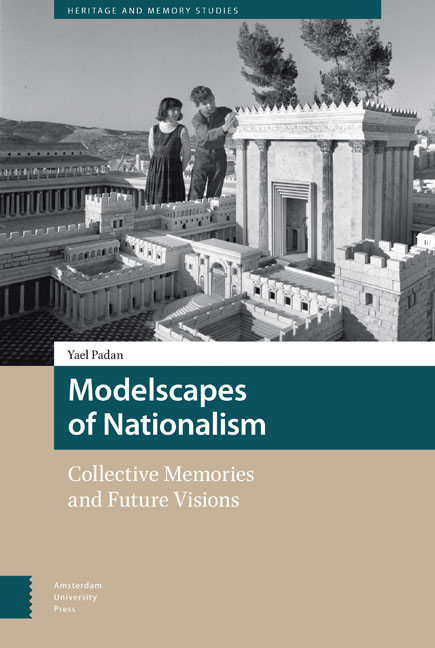Book contents
- Frontmatter
- Dedication
- Contents
- List of Illustrations
- Preface
- Introduction: Narratives into Objects, Objects into Narratives
- 1 The Qualities of Modelscapes
- 2 Models and Modern Perceptions of Nationalism
- 3 The Second Temple Model
- 4 Mini Israel
- 5 The Valley of the Communities
- Conclusions
- Bibliography
- Index
Introduction: Narratives into Objects, Objects into Narratives
Published online by Cambridge University Press: 12 February 2021
- Frontmatter
- Dedication
- Contents
- List of Illustrations
- Preface
- Introduction: Narratives into Objects, Objects into Narratives
- 1 The Qualities of Modelscapes
- 2 Models and Modern Perceptions of Nationalism
- 3 The Second Temple Model
- 4 Mini Israel
- 5 The Valley of the Communities
- Conclusions
- Bibliography
- Index
Summary
My grandfather, who was a construction worker, began to build wooden models when he retired. First he chose sites from his personal history that he wished to remember. Later he built models of monuments from postcards that he found interesting. As a child I was fascinated by these models, especially when he placed colourful lamps that lit them from within. Perhaps the memory of these models was one of the reasons I chose to study architecture, and later to write about models.
What is the importance of architectural models? They are found in many cultures, alongside other forms of representation such as texts and images. Albert Smith argues that architectural models have served throughout history as ‘machines for imagining’ (Albert Smith, xxii), or thinking mechanisms, which participate in defining a culture's universe. He further suggests that models are capable of mediating between perceived chaos and human designs, enabling humans to measure and test their various concepts of the invisible (Albert Smith, xxi).
This book focuses on architectural models which are on display to the public and consequently have some collective aspects. Models of this kind are fairly common, often found in museums, town halls, landscape and theme parks. I argue that such public architectural models are distinct modes of representation within wider cultural contexts. As discussed by Albert Smith, they are machines for imagining the invisible. This invisible is not merely architectural concepts regarding the shape of future buildings; instead, the public nature of such architectural models suggests that the invisible which they deal with is about outlining collective issues. They serve to define ‘a culture's cosmos’ (Albert Smith vii), and more specifically a particular shared vision of a group's identity.
Some contemporary public architectural models are places of heritage, some of entertainment, while others are intended to instruct and educate. Some models aim to combine these notions by offering an experience of ‘edutainment’. A recurring feature in many models is a claim to authority by representing some kind of authenticity regarding the external world. The visitors to such models are introduced to a certain ‘reality’ which is laid out in front of them, inviting interest and participation in their contents. Scale relations between the human body and the model often create a feeling of empowerment of the visitor over the miniature model.
- Type
- Chapter
- Information
- Modelscapes of NationalismCollective Memories and Future Visions, pp. 13 - 26Publisher: Amsterdam University PressPrint publication year: 2017



